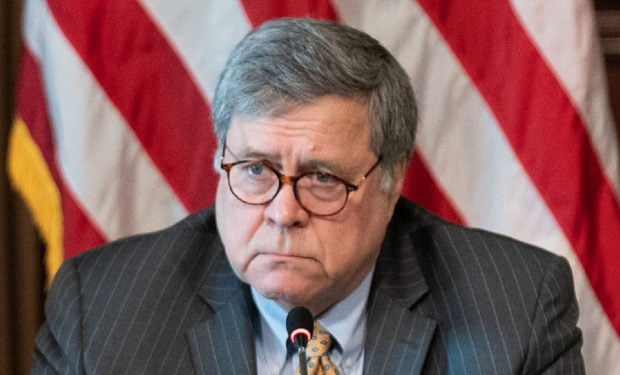The Bush-era (1991-93) Attorney General William Barr, a conservative lawyer who became U.S. Attorney General for the second time during the Trump administration, was touted upon his return to the job as one of the so-called “adults in the room” when the veteran Washington insider was selected to replace original Trump AG Jeff Sessions.
The “adults in the room” terminology was commonly used to identify people in the Trump administration with government or deep military experience — people who were expected to provide balance to an inexperienced Trump team ostensibly set on disrupting the status quo led by a President who had never held elective office.
But unlike some of the other experienced hands in the administration — Gen. Mark Milley, former Defense Secretary Mark Esper, former national security adviser John Bolton, et al — who resisted indoctrination into full MAGA mode, Barr became a consigliere to Trump on his many legal challenges, supporting a sweeping vision of executive branch power that surprised may of his former colleagues.
Now nearly four years after the events at issue, the Inspector General at the U.S. Department of Justice has released a report tying Barr directly to the decision to release a misleading Justice Department statement just before the 2020 election fueling speculation that there may have been voter fraud in Pennsylvania.
As The Guardian reported in the aftermath of the release, the Justice Department’s “decision to publish findings of investigation into possible ballot irregularities in Pennsylvania is highly unusual – and deeply concerning.”
Today we released a report of investigation into statements in September 2020 by the then U.S. Attorney for the Middle District of Pennsylvania and then AG Bill Barr concerning a Luzerne County, Pennsylvania, election fraud investigation. Read the report: https://t.co/s92c6DVPT9
— DOJ Inspector General (@JusticeOIG) July 25, 2024
The DOJ was investigating a case of nine Pennsylvania ballots that were wrongly discarded by a worker when Barr approved informing the public about a potential irregularity and also informed Trump about the ongoing investigation, which DOJ guidance states should have remained in-house until the investigation was complete.
Trump used the Barr-supplied information to further fuel his prominent “rigged election” narrative, supported by the report that fed public suspicion about “potential issues with mail in ballots” even while the investigation — which ultimately found no fraud — was ongoing.
The current 76-page report links the DOJ decision to amplify fraud suspicion in the public sphere directly to Barr.
The report, officially A Report of Investigation Into the Department’s Release of Public Statements Concerning a Luzerne County, Pennsylvania, Election Fraud Investigation in September 2020, says of Barr’s actions:
“Providing this information to the president, who was not bound by the department’s policies prohibiting comment on ongoing investigations and who had a political interest in publicizing the investigation, created the risk that the president would use the department’s non-public investigative information to advance his own political aims…A risk that was in fact realized when President Trump referenced the ballots on a national radio show the next morning.”
